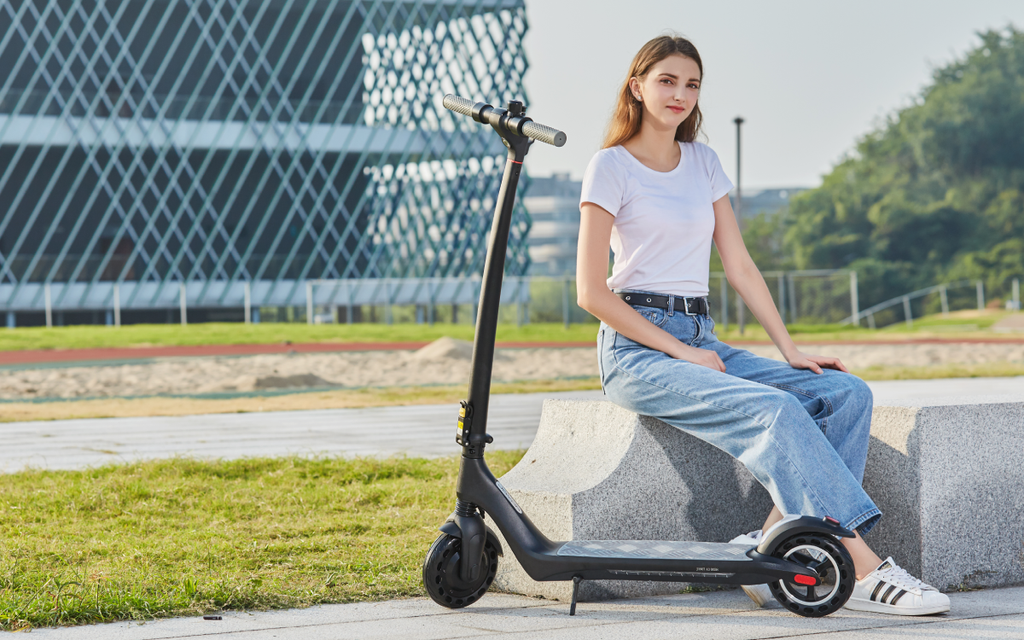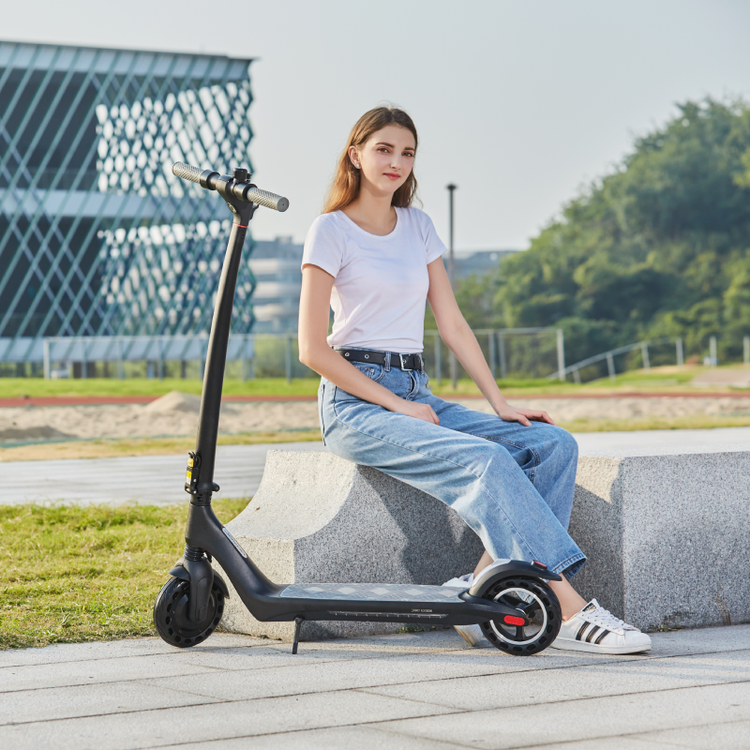In Europe, it is increasingly common to see citizens opting to use electric scooters as their preferred means of transport. For this reason, many European cities have begun to incorporate new services into their public transport system that allow the rental of scooters, whether for regular or sporadic trips.
Therefore, it is essential to know the regulations in force, and that is precisely why in this article we will examine some aspects of some countries on the regulations governing the use of electric scooters in Europe.
Although this innovative form of mobility is economical, environmentally friendly and fun, it has not been free of controversy, generating in some cases problems of coexistence and giving rise to an interesting public debate on how public space should be used, both to circulate with electric scooters and to park them.
For this reason, for some time now, the various countries of the European Union have initiated a thorough study and regulation of this new form of mobility, with the aim of promoting harmonious coexistence between users, pedestrians and traditional means of transport circulating in our cities.
Thus, the legislation governing the use of electric scooters in public space is relatively recent, since, until recently, many countries lacked regulations in this area or, if they had them, they were very limited.
Today, several Member States have established different traffic codes to integrate this emerging form of mobility. However, it is important to note that these new regulations are not harmonized, which means that there can be major differences between countries. Thus, what may be permitted in one country may be prohibited in another.

Common regulations for the use of electric scooters throughout Europe that must always be observed:
- Always drive with caution, attention and care.
- Whenever possible, use bike lanes and respect traffic rules.
- Do not disturb or obstruct pedestrians. Pedestrians always have priority on sidewalks and pedestrian areas (when electric scooters can be ridden on sidewalks).
- It is forbidden to use a cell phone while driving.
- It is forbidden to ride with a passenger.
- Wear a helmet, even if it is not mandatory.
- Do not drive under the influence of alcohol or drugs.
- Violations are usually severely punished.
REGULATIONS IN SPAIN
Minimum age
The DGT recommends a minimum age of 16 years old. In addition, it is subject to local regulations, so it is recommended to consult them beforehand. For example, in Madrid, driving an electric scooter is allowed from the age of 15. Renting an electric scooter is usually only possible from the age of 18.
- Take into account local regulations.
- 25 km/h
The speed limit may vary from city to city. In Seville, for example, the speed limit on bike lanes is 15 km/h (9 mph). In Bilbao, overtaking is only allowed at 10 km/h.
Helmet
Depending on the city, different regulations apply. In Madrid and Barcelona, for example, it is compulsory to wear a helmet when renting an electric scooter.
Driving restrictions
In general, it is not allowed to ride on sidewalks and pedestrian areas, intersections, highways, freeways, main roads and urban tunnels. However, each city may establish its own rules that may differ from the general rule.
Mandatory equipment
- Brakes
- Bell
- Front and rear lights
- Reflectors
- Insurance policy
Currently, there is no compulsory insurance for electric scooters in Spain.
However, cities may enact their own regulations.
Blood alcohol limit
- 0,5 ‰
- 0.3 ‰ for new drivers.
- 0.0 ‰ for those under 18 years of age.
Fines:
- Driving under the influence of alcohol or drugs will be fined between €500 and €1,000. In addition, the scooter will be confiscated.
- A fine of €200 may be imposed for:
- Using a cell phone while driving.
- Wearing headphones.
- Driving at night without lights.
- Driving on the sidewalk.
REGULATIONS IN GERMANY
Minimum age
- 14 years old.
Maximum speed
- 20 km/h. Electric scooters that can go faster than this are not allowed.
Where is it allowed to ride?
- In areas reserved for cyclists.
- If there is no bike lane, you can ride on the road and, outside built-up areas, on the shoulder. It is forbidden to ride on sidewalks and pedestrian areas.
Mandatory equipment
- White front light and red rear light.
- Two independent brakes.
- Bell.
- Parking
- They can be parked on the shoulder or on the sidewalk as long as they do not obstruct traffic.
- They can be parked in pedestrian zones, as long as these are enabled for scooters.
- Insurance policy
- The electric scooter must be insured and must carry the corresponding insurance sticker, which is valid for 12 months.
- In the event of an accident, the third party insurance will cover damages to third parties.
- The insurance can only be obtained if you have a general traffic permit ("Allgemeine Betriebserlaubnis, ABE").
- The sale of electric scooters that are intended for the German market must include the ABE in the documentation. Attention should be paid to this documentation when purchasing an electric scooter.
- If it does not have an ABE, it may not be used in road traffic.
Blood alcohol limit
- 0,5 ‰.
- For drivers under 21 years of age and novice drivers, the limit is 0.0 ‰ during the test period. Whoever drives an electric scooter under the influence of alcohol can lose his license.
Other
Foldable electric scooters may be transported free of charge as hand luggage on long-distance trains.
REGULATIONS IN FRANCE
Minimum age
- 12 years old.
Maximum speed
- 25 km/h. The electric scooter must be driven at this speed due to its design.
Where is it allowed to circulate?
- On bike lanes in urban areas.
- If they do not exist, you can ride on the road if the speed limit is 50 km/h.
- Outside urban areas, you can only use "voies vertes" (shared paths and bike lanes). Riding on sidewalks and pedestrian areas is prohibited. However, cities may allow it. The walking speed (6 km/h) applies.
- In exceptional cases, roads with a maximum speed of 80 km/h may be authorized for electric scooters. In this case, helmets are mandatory and minors must be accompanied by an adult.
Blood alcohol limit.
- 0,5 ‰.
- 14 of 24
Parking
- It is permitted to park the scooter on the sidewalk, provided that it does not obstruct pedestrians.
Paris Exception.
- It is forbidden to park on the sidewalks. You may be fined 49 euros and may have to bear towing costs.
Mandatory equipment
- Brakes.
- Bell.
- Front and rear lights.
- Rear and side reflectors.
- Reflective clothing at night and in poor visibility.
Helmet and headphones
- Helmets are not mandatory but recommended. - Headphones are prohibited.
Insurance policy
- Third party insurance is required to drive an electric scooter in France.
Fines
- Driving with headphones: 35 euros.
- Driving on the sidewalk: 135 euros.
- Using an electric scooter at a speed exceeding 25 km/h: 1,500 euros.
REGULATIONS IN ITALY
Minimum age
- 14 years old.
Maximum speed
- 20 km/h.
- 6 km/h in pedestrian areas.
Helmet
- Helmets are recommended for everyone. Teenagers between 14 and 18 years old must wear helmets.
Where is it allowed to ride?
- On bike lanes and mixed lanes for pedestrians and cyclists. - On urban roads where the speed limit is 50 km/h.
- In pedestrian zones (max. 6 km/h).
- It is forbidden to ride on sidewalks and against the flow of traffic.
Parking
- Parking on the street is permitted, as long as it does not obstruct traffic or block entrances, exits or walkways.
- On sidewalks, the electric scooter may only be parked in designated areas.
- Liability insurance is not mandatory for electric scooters.
Mandatory equipment
- Brakes (*New: front and rear). - Bell.
- Front and rear lights.
- Reflectors.
- New: Direction indicators (yellow flashing lights, front and rear).
- Reflective clothing (in the dark, from half an hour after sunset).
Fines
- Riding two people on an electric scooter can result in a fine of between €100 and €400.
- Electric scooters that do not meet the legal requirements (lights, turn signals, etc.) can be confiscated during a traffic control.
- Upgraded electric scooters, e.g. with a more powerful motor, may be confiscated and fined.
- Violations of the speed limit are punishable by fines of €42 to €168.
- In June 2023, the Italian government announced stricter rules for electric scooter drivers. In addition to helmets, liability insurance and license plates will be mandatory. Parliament has yet to approve the proposed legislation.
REGULATIONS IN PORTUGAL
Minimum age
- There is no legal minimum age. However, you must be at least 18 years old to rent an electric scooter. You must also bring an identity document.
Maximum speed
- 25 km/h.
- Electric scooters for rent in Lisbon have a maximum speed of 20 km/h.
Helmet
- Its use is not compulsory but it is recommended.
Where is it allowed to ride?
- Bicycle lanes and roads must be used. If they are not available, you can use urban roads.
- It is forbidden to ride on sidewalks, public squares and pedestrian areas.
Parking
In Lisbon, the electric scooter cannot be parked in the following places:
- Public squares.
- Sidewalks.
- Train and subway stations.
- In front of historical buildings.
- In the capital, special parking zones have been created for electric scooters.
Blood alcohol limit.
- 0,5 ‰. Violators can be fined between €250 and €2,500. Above 1.2 ‰, there is a risk of imprisonment.
Insurance policy.
- Not mandatory for electric scooters.
Others
- Mandatory equipment includes the use of front and rear lights and reflectors in the dark.
- It is forbidden to ride with headphones or use a cell phone.
In a world where urban mobility is evolving rapidly, electric scooters have emerged as a dynamic and exciting mode of transportation. As we've seen, European cities are embracing this trend, and regulations are evolving to ensure a safe and harmonious coexistence among users, pedestrians, and traditional forms of transport.
From the charming streets of Spain to the efficiency of Germany, the elegance of France, and the style of Italy, electric scooters are weaving their way into the fabric of modern urban life. These sleek and eco-friendly vehicles offer a thrilling yet responsible way to navigate our bustling cityscapes.
So, whether you're cruising along the Seine, exploring the historic streets of Rome, or embarking on a journey through the heart of Berlin, remember to grab your helmet, respect the local regulations, and join the revolution. Let your city become your playground, and let the wind in your hair be a reminder of the freedom that electric scooters bring to our modern metropolises. Embrace the scooter revolution and ride into the future of urban mobility!
If you have any doubts, questions or would like more information about any other country, please leave us a comment.
The information published on the CEC-Germany website as of July 4, 2023 was used to prepare this brochure.

